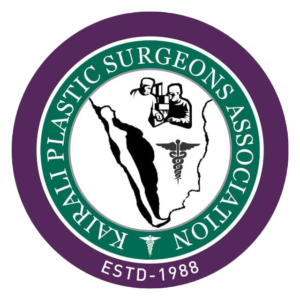
Lasers are the most versatile of a wide range of medical devices collectively called Energy Based Devices that have greatly expanded the range and scope of Cosmetic Skin Treatments over the past two decades.
Put simply, LASER (Light Amplification by the Stimulated Emission of Radiation) is a collimated (accurately parallel rays) beam of light of a single wavelength. Based on the variables of wavelength, pulse width etc there are several types of lasers. Each of these preferentially interacts with a particular component of the human tissue like haemoglobin, melanin, water, fat etc to produce the effect we desire.
Newer technological advances have enabled us to deliver large quanta of energy in a very short instant (of the order of a few trillionths of a second) which can create the desired effect in the deeper layers without causing any damage to the overlying skin. Think of it as the difference between heating water on a gas stove versus heating water in a microwave oven.
This has opened up tremendous possibilities for the use of LASERs for a wide range of indications.
Conditions that can be treated using LASERs
- Hair Removal
- Tattoo Removal
- Non-surgical removal of Birth marks, Naevi, Age spots
- Skin Brightening
- Laser Facial Toning
- Vascular Malformations
- Acne / Acne Scars
- Scars – both prevention and treatment
- Stretch Marks
- Non Surgical Face Lift in Early Aging
- The indications keep increasing with refinements in Laser Technology.
Things to Remember While Considering Laser Treatment
- It usually takes multiple sessions of laser treatment (4 to 10 or more) depending on the condition being treated, usually 2 to 6 weeks apart to produce optimal results.
- Laser-tissue interaction differs from person to person. So, treatment parameters may have to be individualized as each person’s response to treatment in terms of the rate and extent of improvement is different.
- Some laser treatments could sting a little, the sensation often described as similar to a ‘rubber band being snapped against the skin’. So if it hurts, you could ask for anaesthetic cream to help numb the pain. But this needs about 45 minutes contact period for full effect. So arrive early if you prefer to have it done under topical anaesthesia.
- If you are opting for Laser Hair Removal, you may be asked to avoid threading / tweezing / plucking your hair prior to the laser treatment and trim or shave instead. This is because the presence of hair roots is essential for the laser hair removal to work effectively. Laser hair removal is an effective and relatively pain-free method to tame hair growth on the face, forearms, legs, underarms, and for the adventurous, even the private areas.
- Post laser, it is normal to feel a bit ‘hot’, like after a mild burn. Also the skin may turn erythematous. This is usually short-lived and will resolve in a few hours. Be sure to strictly follow your doctor’s instructions regarding Post Laser Skin Care.
Post Laser Skin Care
You may be advised to use a combination of moisturisers, topical mild steroid, antibiotic cream, sunscreens depending on the kind of treatment undergone.
It is important to avoid sun exposure for the first few days after Laser treatment. This is to avoid worsening Post Inflammatory Hyperpigmentation (PIH) which is a temporary darkening of the treated skin for several weeks in response to the laser.
Most Laser Treatment Centres have well-tested pre and post laser skin care regimens that have been fine tuned over years of experience. Make sure you follow these skin care instructions meticulously for best results.
For further information, feel free to contact the KPSA helpline team, who will help you connect to a Plastic Surgeon in your area.
